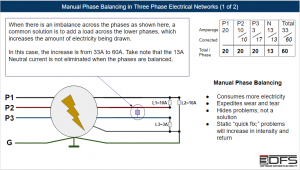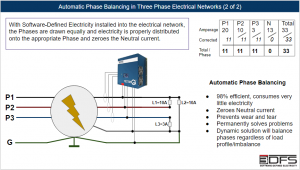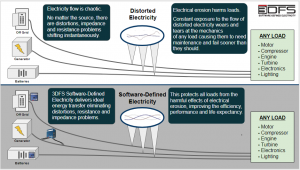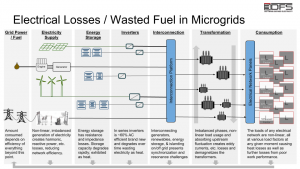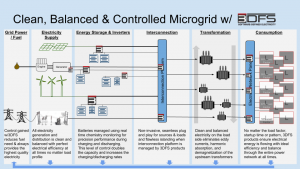Definition of the Term: 3DFS Technology leverages the Multiparametric Electrical Signature Analysis to track the changes in the electrical signature for each device over time providing valuable information about the performance and life expectancy of the device.
As devices operate, analysis of the work performed reveals energy consumption patterns as an identifiable signature for each of the mechanical actions performed. These signatures are tracked and the differences are examined and tracked for a real time understanding of the ever shifting power consumption (i.e. analyzing and comparing startup signatures, or signatures during the load transition of a motor, etc.).
Over time, there is a slow wearing and tearing of components in devices powered by electricity that results in mechanical failure. 3DFS Technology is always analyzing and recording the multiparametric signature pattern leading up to the downtime. For the device, the electrical signature profile that is created becomes a single digital map of the device performance. It is in essence the medical records of the device, which also opens up a new market of device repair and diagnostics using electrical signature analysis.
Description of the Benefits: Accuracy in predictive analytics brings certainty to repair and maintenance schedules, building infrastructure management and business forecasting
Comparison to existing technology / methodologies: In today’s market there are many different approaches to predictive analytics other than electrical signature analysis, however they are all measuring secondary parameters. For example, a trendy method today is vibration analysis to predict machine failure. The principle is that the wear and tear mentioned above will erode to the point where there is enough shaking in the device for a vibration sensor to register. There is a lot of time and damage that occurs between the wear and tear event starting and when it is causing noticeable vibrations.
When a device changes it mechanics due to wear and tear, the very first place it is noticeable is in the electricity usage. In the example mentioned above, 3DFS Predictive Analytics would identify the problem in the electrical signature weeks or months before vibration analysis could detect anything.




